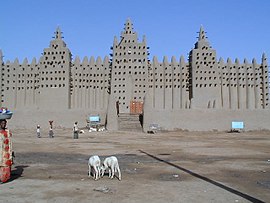User:MPSCL/Sandbox
Vanitas vanitatum, dixit Ecclesiastes, vanitas vanitatum et omnia vanitas. Quid lucri est homini de universo labore suo, quo laborat sub sole?
Qoheleth's stated aim is to find out how to ensure one's benefits in life, an aim in accord with the general purposes of wisdom literature. For Qoheleth, however, any possible advantage in life is destroyed by the inevitability of death. As such, Qoheleth concludes that life (and everything) is senseless. In light of this conclusion, Qoheleth advises his audience to make the most of life, to seize the day, for there is no way to secure favorable outcomes in the future. Although this latter conclusion has sometimes been compared to Epicureanism, for Qoheleth it comes about as the inevitable result of his failure to make sense of existence.
This conclusion is reflected in the refrain which both opens and closes Qoheleth's words:
"Utterly senseless" says Qoheleth, "Utterly senseless, everything is senseless!" The word translated senseless, הבל (hevel), literally means vapor, breath. Qoheleth uses it metaphorically, and its precise meaning is extensively debated. Older English translations often render it vanity. Because in modern usage this word has often come to mean "self-pride," losing its Latinate connotation of emptiness, some translators have abandoned it. Other translations include empty, futile, meaningless, absurd, fleeting or senseless. Some translations use the literal rendering vapor of vapors and so claim to leave the interpretation to the reader.
Ultimately, the author of Ecclesiates comes to this conclusion in the second to last verse of the last chapter:
"The end of the matter; all has been heard. Fear God, and keep his commandments; for that is the whole duty of everyone." Some argue that these two last verses are an addition to the original script since they stand in contrast to all of the previous statements made. Others argue that it actually completes the message by saying that nothing is of as high importance as the work of God.
Other translations of Ecclesiastes 1:2 include:
"Vanity of vanities! All is vanity!" "Meaningless of meaningless! All is meaningless!" "Futility of futilities, all is futile."
The English title of the book, Ecclesiastes, comes from the Septuagint translation of Qohelet, Εκκλησιαστής. It has its origins in the Greek word Εκκλησία (originally a secular gathering, although later used primarily of religious gatherings, hence its New Testament translation as "church").
The word Qohelet has found several translations into English, including The Preacher (translating Jerome's ecclesiastes and Martin Luther's Der Prediger). Since preacher implies a religious function, and the contents of the book do not reflect such a function, this translation has largely been rejected by modern translations and scholars. A better alternative is "teacher", although this also fails to capture the fundamental idea behind the original Hebrew title.

The architecture of Africa, like other aspects of the culture of Africa, is exceptionally diverse. Many ethno-linguistic groups throughout the history of Africa have had their own architectural traditions. In some cases, broader styles can be identified, such as the Sahelian architecture of an area of West Africa.
As with most architectural traditions elsewhere, African architecture has been subject to numerous external influences from the earliest periods for which evidence is available. Ancient Egyptian architecture, for example, reveals strong influence from ancient South-west Asian traditions. More recently, Islamic architecture has been the most significant influence on North African architecture, leading to the creation of the Swahili architecture style. Western architecture has also had an impact on coastal areas since the late 15th century, and is now an important source for many larger buildings, particularly in major cities.
A number of new cities were built following the end of colonialism, while others were greatly expanded. Perhaps the best known example is that of Abidjan, where the majority of buildings were still designed by high-profile non-African architects. In Yamoussoukro, the Basilica of Our Lady of Peace of Yamoussoukro is an example of a desire for monumentality in these new cities, but Arch 22 in the old Gambian capital of Banjul displays the same bravado.
